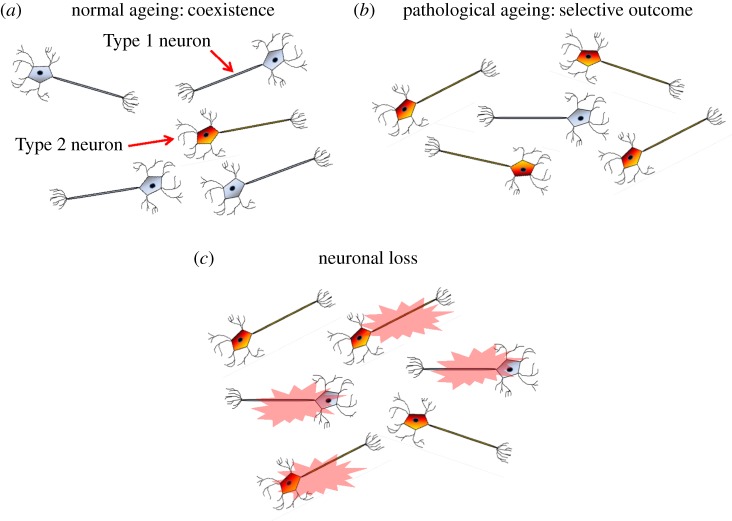Figure 3.
Metabolic alteration and natural selection lead to pathological brain ageing. (a) Normal (Type 1) neurons primarily use OxPhos for ATP production. Neurons use glucose preferentially when at rest but rely on lactate to meet energy needs when synaptically active. Age-related damage leads to decreased energy production from mitochondrial dysfunction and decreased energy precursors. Neurons with impaired energetics compensate by upregulating OxPhos (the inverse Warburg effect). (b) These impaired (Type 2) neurons now compete with (Type 1) neurons for limited lactate. In normal ageing, these two populations are able to coexist in a quasi-stable state. (b) Under additional metabolic stress from diverse processes such as vascular disease, cerebral trauma and diabetes, more and more neurons will convert to Type 2, as they have a selective advantage and their higher evolutionary entropy gives them higher viability under conditions of a scarce energy resource. (c) Eventually, Type 1 neurons will lose this energy competition and begin to die. Owing to their OxPhos upregulation, Type 2 neurons will incur progressive oxidative stress. While this benefits survival in the short term, eventually it causes progressive oxidative damage and neuronal loss. (Online version in colour.)

